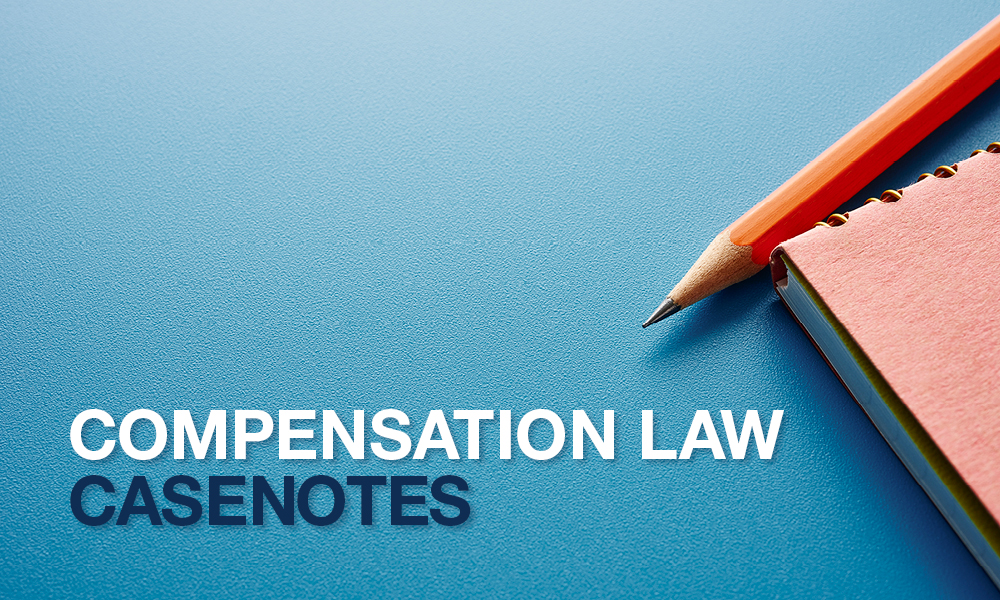Interest – Workers’ Compensation and Rehabilitation Act 2003 (Qld) s306N – cap on interest – Uniform Civil Procedure Rules 1999 (Qld) r388 – correction of accidental slip or omission
On 12 May 2023, the District Court delivered judgment1 awarding the plaintiff damages in respect of a claim brought against the defendant relating to a workplace incident.
The claim was subject to the Workers’ Compensation and Rehabilitation Act 2003 (Qld) (WCRA), among other applicable legislation. The court awarded damages in the sum of $148,114.85, clear of a statutory refund repayable to WorkCover Queensland.
The award included components for interest (on past economic loss and past special damages), which were calculated using a rate of 0.745% per annum (based on the 10-year treasury bond rate as at 1 July 2021 of 1.49%, halved to reflect the progressive incurrence of loss over the period).
Errors
After the trial decision, the parties identified several contended errors within the judgment.
The parties brought the errors to the court’s attention, and sought correction of these pursuant to r388 of the Uniform Civil Procedure Rules 1999 (Qld) (UCPR), on the basis there was a mistake or error in the orders that resulted from an accidental slip or omission.
The parties were largely in agreement about a number of errors (including an error in the calculation of past loss of superannuation).
The main issue in contention concerned the applicable rate for calculating interest.
The statutory regime
The court’s attention was drawn to WCRA s306N(2), which provides that interest on past monetary loss must:
(a) not be more than interest at the appropriate rate
(b) be related in an appropriate way to the period of loss.
WCRA s306N(3) further provides that the ‘appropriate rate’ is the 10-year treasury bond rate (published by the Reserve Bank of Australia under ‘Interest rates and yields—capital market’) at the beginning of the quarter in which the award of interest is made.
The 10-year treasury bond rate as at 1 April 2023 (being the beginning of the quarter in which the trial decision was made) was 3.32% per annum. Halving that rate – to appropriately relate it to the period of time over which the loss was progressively incurred – produced a rate of 1.66% per annum.
Primary issue
The key issue was the rate to be adopted when calculating interest.
The defendant contended that the unusually high 10-year treasury bond rate at the date of judgment (being 3.32% per annum) would produce an “unfair and unjust outcome”, as it did not reflect the plaintiff’s true costs of being without the award over the whole period of loss.
The defendant further contended that the time taken to deliver judgment also resulted in unfairness. The defendant proposed an approach – adopting an average of the rates applicable at the time of trial and in the nine months following (which the defendant asserted was the “normal timeframe under which judgment would have been anticipated”), which would average 2.016% per annum.
Decision2
The court dismissed the assertion of any unfairness arising from the high treasury bond rate at the time of the award. The court noted WCRA s306N had the evident purpose of foreclosing contention that a higher commercial rate should be adopted. It also noted adopting that rate had the benefit of expediency and simplicity.
The court also dismissed the assertion of any unfairness arising from the time taken to deliver judgment. It noted the delay did not change the plaintiff’s entitlement to be compensated for being kept out of his award, nor did it punish the defendant as they had the benefit of retaining payment throughout the delay.
The court ultimately adopted a rate of 1.66% per annum based on a rate of 3.32% per annum, and halved to appropriately relate it to the period of time over which the loss was progressively incurred. The court revised the awards of interest using the above rate, along with making some other minor adjustments to interest and superannuation awards.
The court ordered that, pursuant to UCPR r388, the original judgment be corrected to reflect damages in the sum of $151,639.80, clear of the statutory refund repayable to WorkCover Queensland.
Key takeaway
While WCRA s306N(2)(a) technically imposes a statutory cap on the appropriate rate of interest, the court here simply adopted the cap as the applicable rate. In doing so, the court noted the simplicity and expediency of this approach, and acknowledged the underlying purpose of the provision was simply to restrict the application of greater commercial rates.
Regarding the requirement in WCRA s306N(2)(b) to relate an award of interest to the period over which the loss was incurred, the court supported the approach of halving the appropriate rate in instances where loss has been gradually incurred over a period of time.
Verity Smith is a Senior Associate (compensation law) with McInnes Wilson Lawyers.
Footnotes
1 Mason v State of Queensland [2023] QDC 80.
2 Mason v State of Queensland (No. 2) [2023] QDC 122.















Share this article